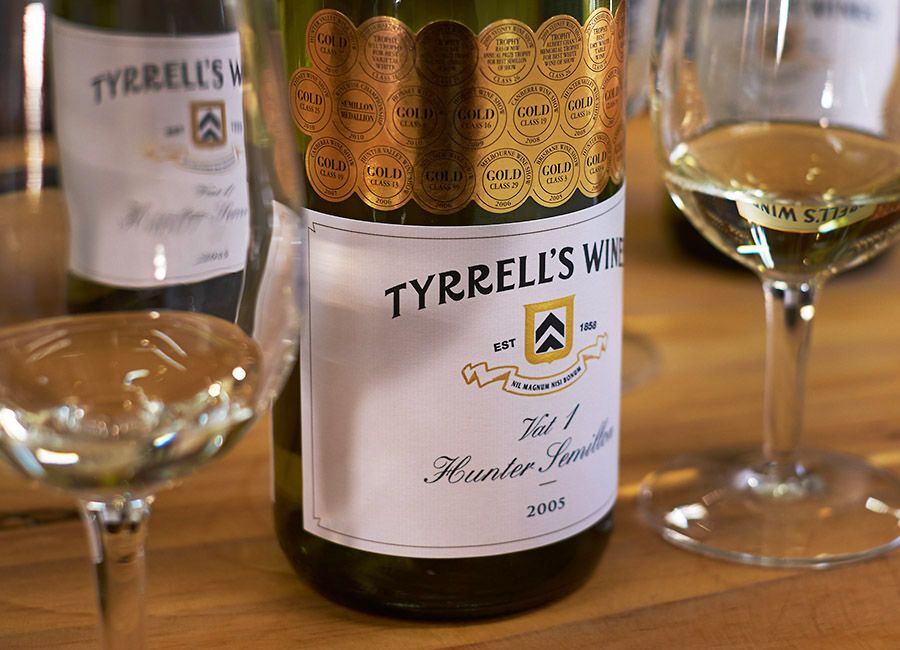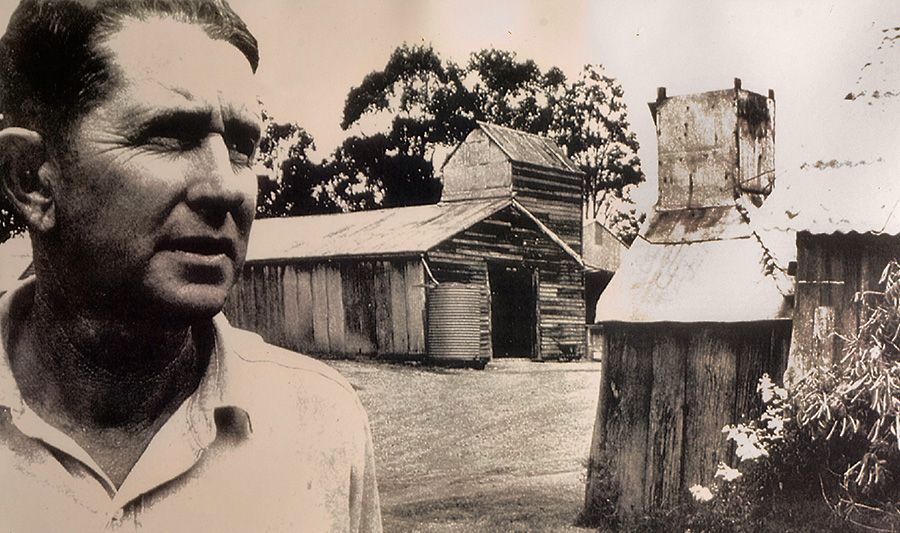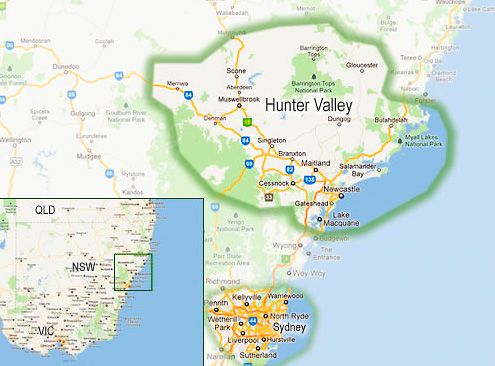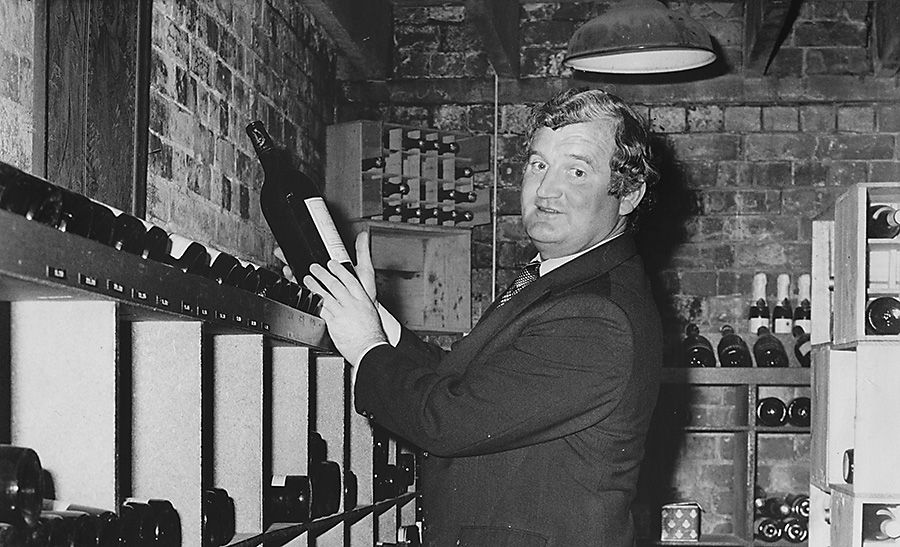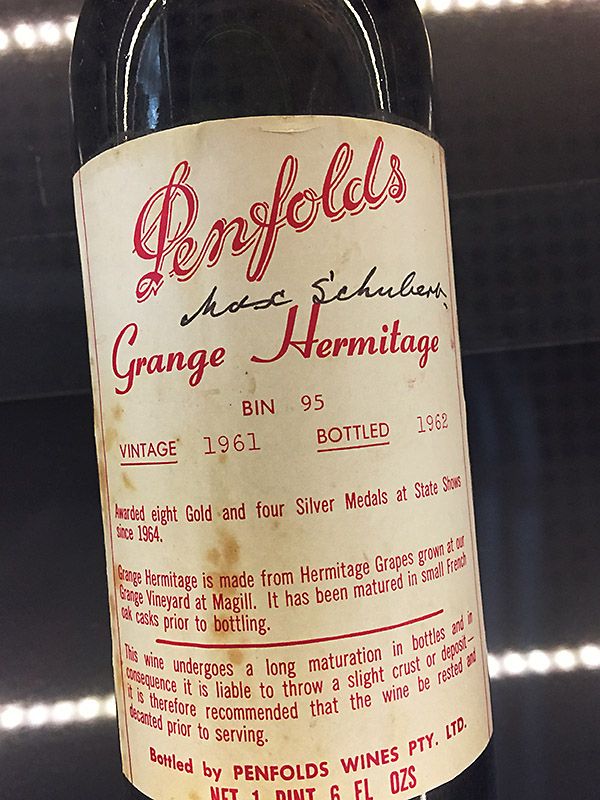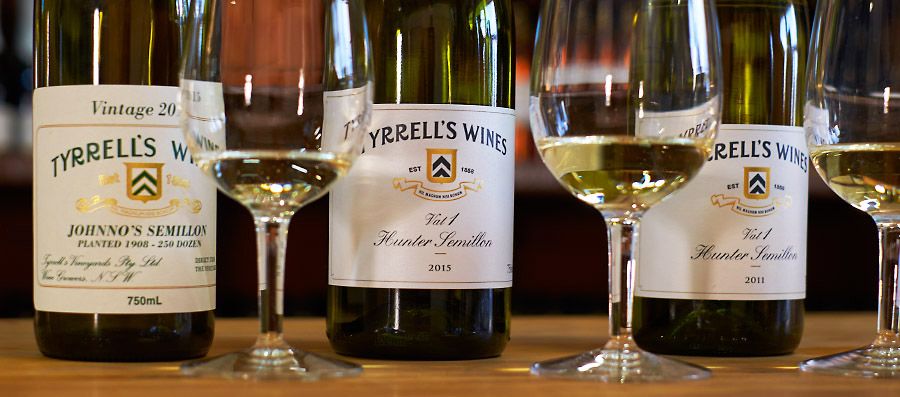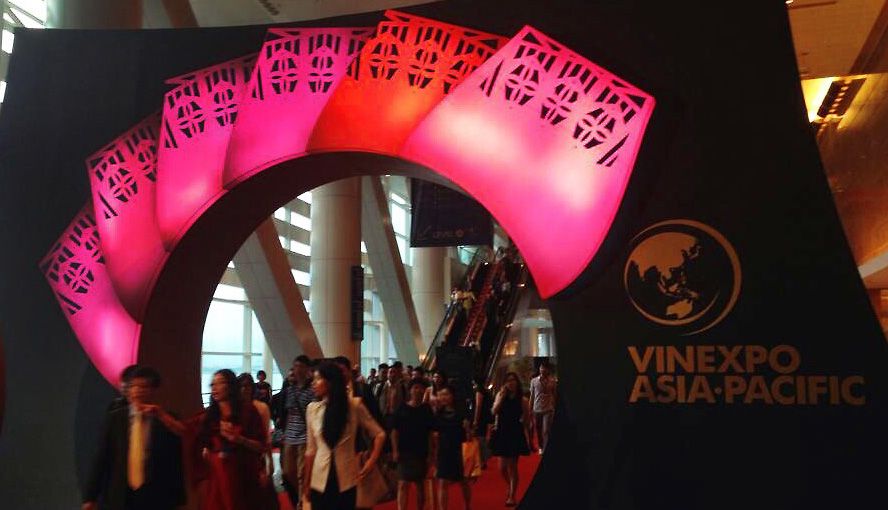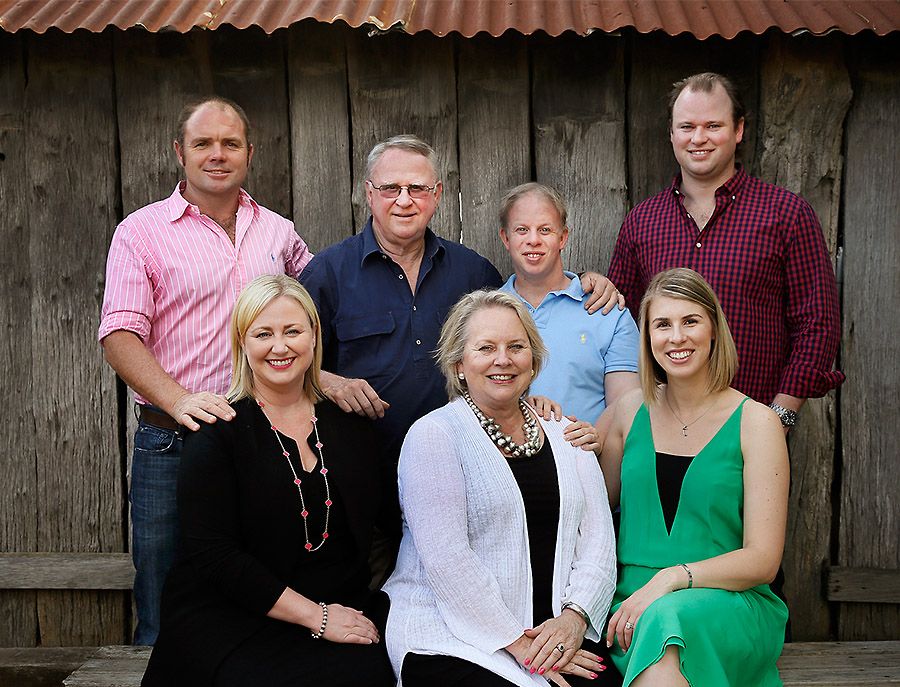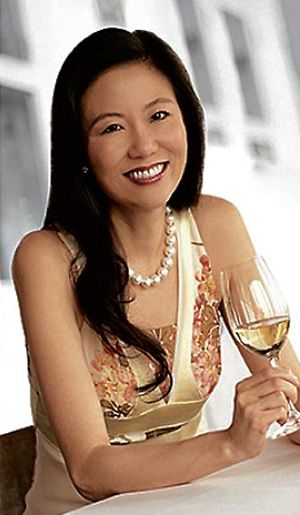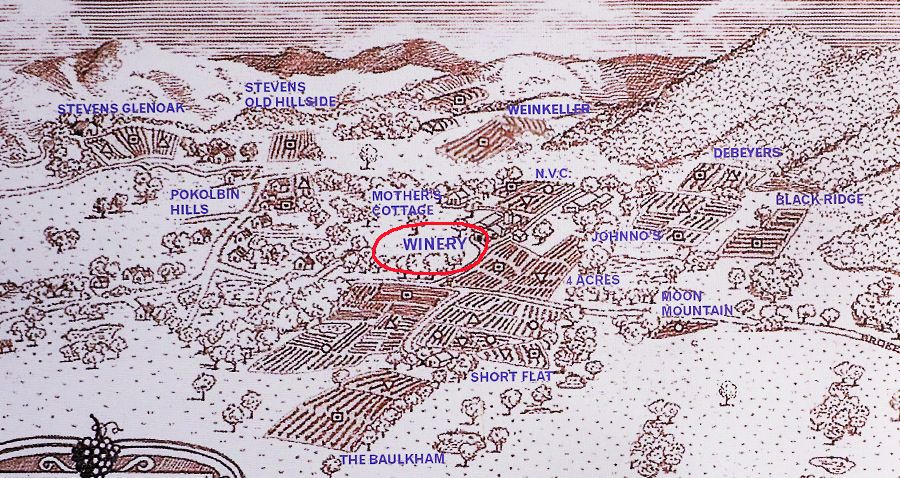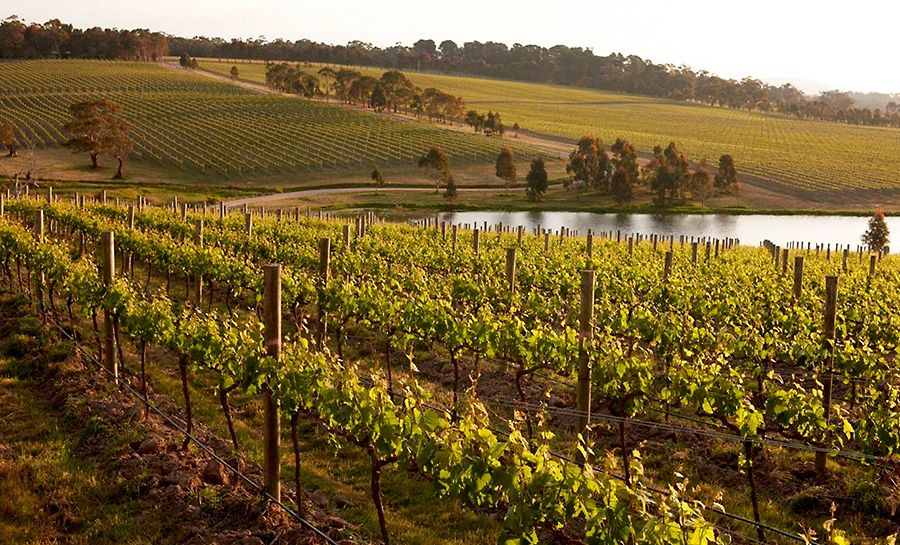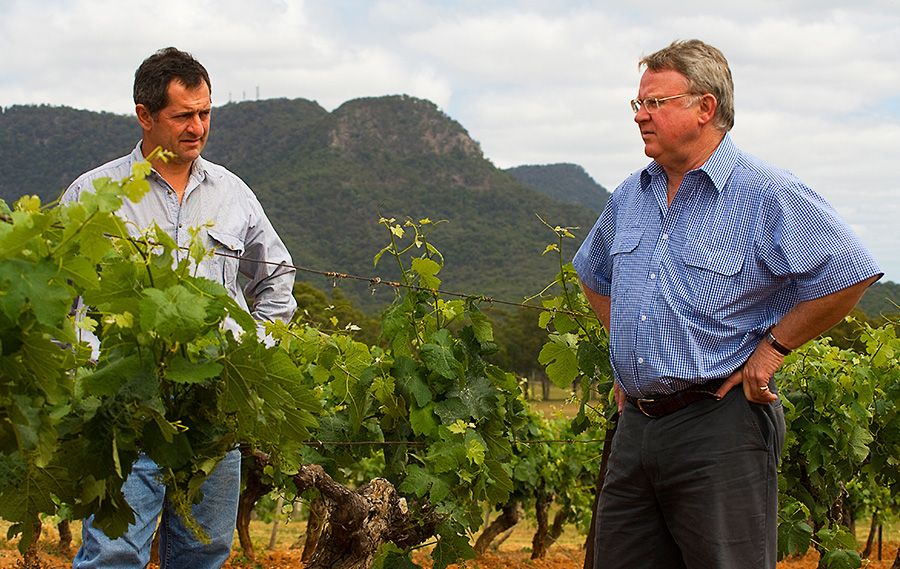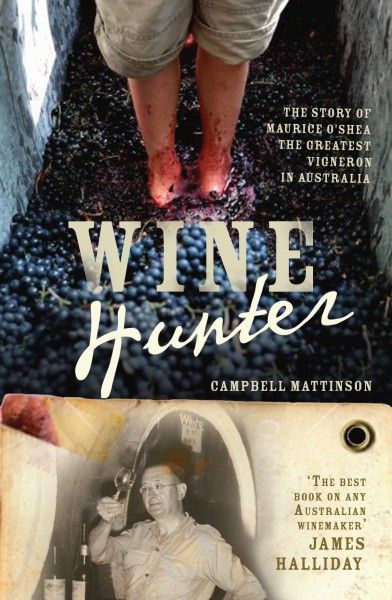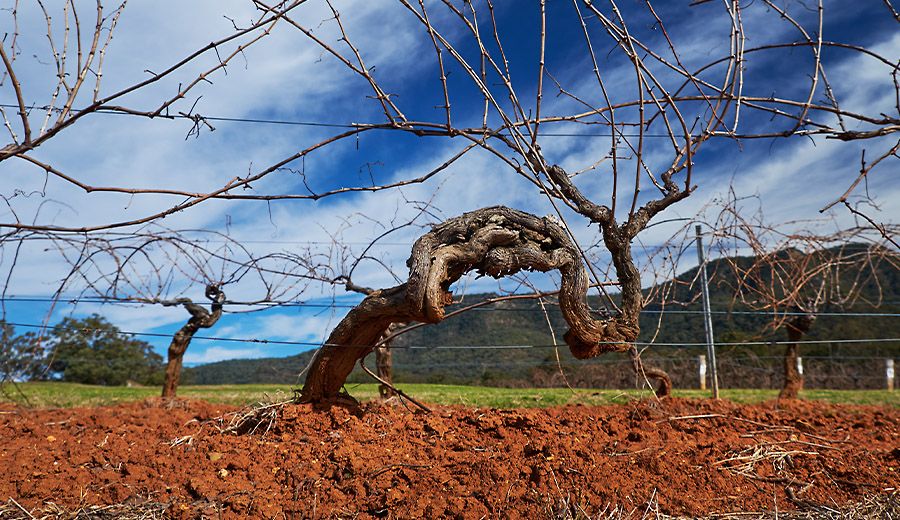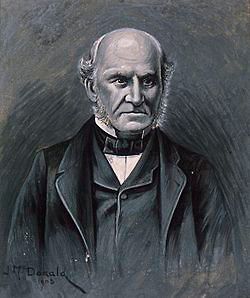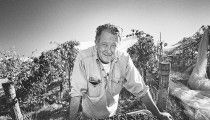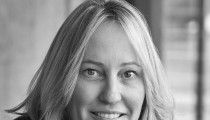Just after I posted the interview with Xavier Bizot, Phil…
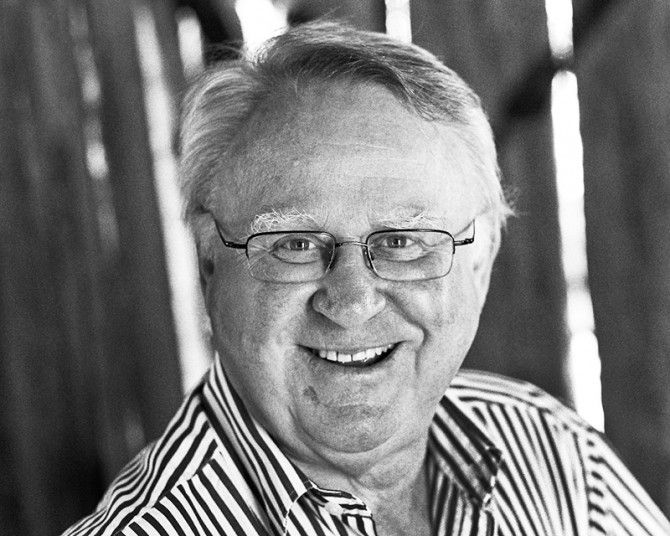
Bruce Tyrrell : Tyrrell’s Wines, Hunter Valley
One of my favourite white wines is Tyrrells Vat 1 semillon.
First tried it in the mid 90’s. We had driven up to Sydney with a box of wine for a celebration dinner with friends at Tetsuya’s. The day of the dinner we realised we had only South Aussie reds and no white wine.
As we were in NSW we thought it should be a Hunter white, so it was off to Sixty Darling St, Balmain; they suggested Vat 1. We bought two vintages, and have been buying it every year since.
Bruce Tyrrell was responsible for Vat 1 being released as a five year old wine, it’s a bit like the Max Schubert and Grange story. I am very grateful for his passion for this wine and I’m sure other semillon lovers are too.
Heres’ Bruce’s story.
Tyrrells Wines is one of the oldest family owned wineries in Australia, did you ever consider doing anything else ?
I was going to play rugby league for Australia then got my right knee smashed and that was the end of that. I wouldn’t have minded journalism I always enjoyed reading and writing.
At one stage I thought maybe the military.
You know I’ve been around this place all my life… my first memory, I must have been about two or three…
I was running around the old receival vat outside, I was just under the edge and the ‘old man’ was cleaning the inside and he tipped a bucket of skins and water straight on to my head, frightened christ out of me.
I didn’t study winemaking, I did Ag Economics at the University of New England, majored in beer, football and girls.
I reckon I have been running the place since October 2000 when my father died – but probably being involved in all major decisions about eight to ten years before that.
He died on the 2nd of the 10th and he was born on the 10th of the second. Dad always used to say they should never started picking here till after his birthday.
We now employ about 68 Full time staff… there was a time when it was 148.
We’re a different business to what we were 25 years ago – a very different business. We’ve pretty much come one line in each generation…its probably why we are still here
Your son Chris is now in the business : Who does what at Tyrrells ?
Chris looks after everything on site here – and has an involvement in the rest – I look after the admin and sales and marketing.
I’m still here at vintage time – I make the picking decisions on the white .
I eat about two tonne of grapes in January and February. We start fizz base in mid January and we finish normally in the last week in February.
We get bud burst 7 – 8 weeks earlier than my sister in Macedon. Chris was like me the winery was his play ground. He then studied at Wagga, but was always around the winery at vintage.
One year he came home from school to work vintage as he had done for years, and said “I actually don’t have a lot of respect for the people who are teaching me and I’ve been working with one of the top ten winemakers in the world – I think I’ll stay here and work with Spin” …
Andrew Spinaze : He’s your head Winemaker, been here for over thirty years, first started casually with us in 1979 I think.
He’s a bloody good winemaker and very much part of the place.
When we get to vintage all the decisions are made between Andrew, Mark Richardson the red wine maker, Andrew Pengilly the vineyard manager, Chris and I.
So if God comes knocking at 4 o’clock in the afternoon – he has to wait until we’ve done our daily juice tasting .
What’s special about the Hunter ?
It’s a very difficult area to grow grapes.
I would suspect this is the most challenging place to grow grapes and make wine in the country. It’s not a bad thing – it means you have to hone your skills and be sharper.
The advantage for it is that because we are northerly our ripening is more in the earlier part of summer, so while everyone will say you have a horrible hot climate in the Hunter, what it means is that we get flavour early.
So with varieties like Semillon you are picking at ten to eleven beaume and they are flavour ripe at that, you can leave them to 13 and a half – but they’ve lost their acid, or the acid’s changed .
You look at the two areas that make white wines that live a long time and they are the two most Northerly ones – because Clare is the same latitude as Sydney.
The wines from here off the decent dirt will out live just about anything.
So the notion about cool climate and the more southerly it has to be, is actually bull shit.
There has been an issue with mining, but we’ve got rid of coal seam gas in the Valley… it’s gone and I guess in the end AGL shot themselves in the foot – we’ve got them out of this immediate area.
Tell you a funny story, there were about ten of us who had dinner here one night with Julia Gillard…when she was Prime Minister and she said are there any rules left to keep the coal seam gas guys off your land and I said Yes there’s one left….she said whats that – and I said ‘Rule 303’…
She had no idea what I was talking about….
I was sitting next to Tim Matheson and I said I think you had better get Breaker Morant out. She said “What” – and he said “he’s going to shoot them” and she said “Ohh Right….”
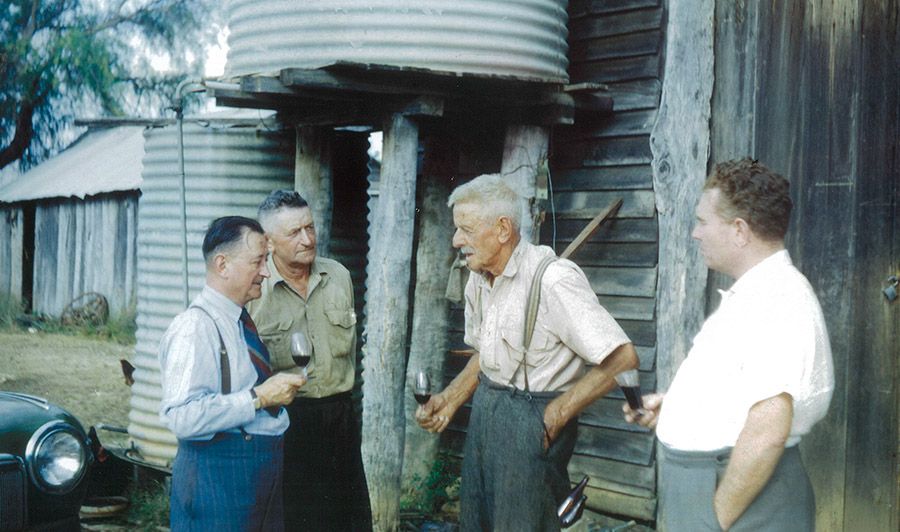
After the 1954 vintage with Maurice O’Shea, Avery Tyrrell, Uncle Dan Tyrrell and Johnnie Walker senior. Photo by Johnnie Walker Jnr
The other thing about the Hunter is the close knit community, the people here, especial the late Len Evans, I always used to say that Evans taught me the difference between good wine and great wine. He was an amazing man, had an amazing memory palate, he never forgot a wine – you had to keep him under control a bit at times.
I was lucky to be invited into the circle that was those Monday luncheon clubs by Evans as a twenty year old. He was and did many things, but the ‘Len Evans Tutorial’ doesn’t exist anywhere else in the world, what a gift to leave to the Australian Wine Industry. Chris did it three years ago , he kept coming home with the list of wines that had tasted and I said Jesus, how good was that….
One of my favourite wines is Tyrrells Vat 1 : You were very much a part of that, I believe you kind of did a Max Schubert, what’s the back label ?
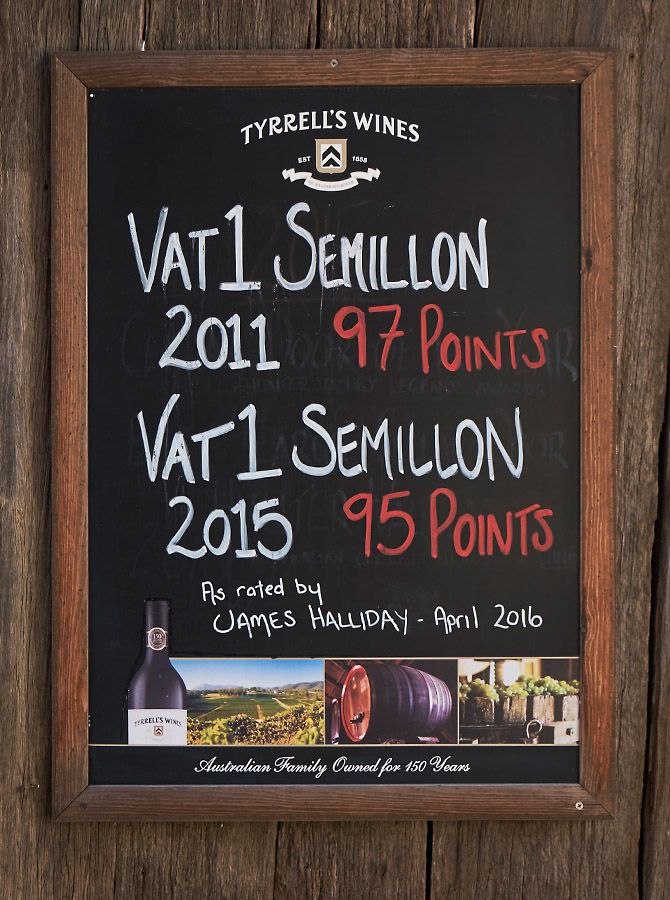
James Halliday’s Vat 1 points. Photo : Milton © Wordley
It’s off that bit of land opposite us at the winery here.
The oldest bit of vineyard down there was planted in 1923. It’s the only bit of land in the district thats got a bit of calcite in it – so it’s a bit different. The first vintage was 1962.
It was not until the eighties I decided to hold back the release date.
It was a real battle – I’d spent a fair bit of time in the States and in the UK. People like John Avery who were helping us in the UK but in the States it was like get the hell out of here with that …. and so I thought if I’ve got to make this work.
Everyone was saying you can’t drink it young you have got to give it some bottle age.
So with the 1989 Vat 1, I hid the first 1000 dozen, away in the shed. There were about 43 board meetings and I was banned from doing it.
The production boss and I hid it behind some red that was put away for a while.
Then we started sneaking it into shows and we started winning gold medals and trophies and then away we went from there.
I remember hearing my dad at a show saying “bloody younger generation never thought of putting this wine away” and I thought oh yeah right’o Dad…..
It’s a very similar story to Grange – Max hid it away for 5 years or more… It was the mid 90s, I reckon it was around $20 a bottle, expensive white wine then….I remember when Grange went through $10 and we all said it wouldn’t sell – and the sales through the roof.
Barossa Semillon, a difference ?
Oh a couple of degrees of alcohol difference – we go with making them at lower alcohol.
But the Lehmann Margaret … that was about 11 and a half… and that’s a very good wine.
The other one who has gone down that line is Alister Purbrick with Tahblik Marsanne – now he’s picking them at 11 they are not the big honeysuckle ones they used to make 25 years ago.
I think that is the thing – if you can get your flavour early and you can maintain acid. … we are going to bottle at 3 3.1 pH the wines are going to live naturally … and it doesn’t matter if its 6 or 8 acid … that’s something which we’ve come to realise – if the acid is down a bit you don’t have to adjust if your pH is right.
Leave the bloody thing alone. Winemaking is pretty easy.
I observed how hard Australian Winemakers work, how much time do you spend travelling and where do you see the future for Aust Wines, Asia ?
This year I’m going to be 6 weeks overseas….. China is our biggest market. Strangely we are now selling more wine back in the States – when our dollar was over a US dollar there was not much market in the States. I can pretty much tell you the american dollar exchange rate over the last 40 years. The interesting bit – I was there 2 weeks ago the reaction to our Semillon was unbelievable.
Years ago they would all say piss off we don’t want to talk to you about Semillon… But now it’s a totally different reaction. The market is always moving and particularly in the States , the sophisticated and medium sophisticated drinkers are looking for something a bit finer.
China is an interesting beast we have a national importer who is probably our smallest customer – I think what I have learned in China is that the normal business model for distributing wine as we know it in the western world doesn’t exist in China. And so we deal a lot with what you’d call the grey market .
We did a job 5 years ago where there were three groups involved – one had a corporate gift giving business – one had a whole heap of shares in sports and leisure clubs and the other two brothers owned over 1000 restaurants. So they don’t need to deal with a local distributor because their business is bigger than the local distributor. They are buying wineries here.
A group came here a while back, and said first thing is that we want to buy 70% of your business and if Christopher and his brother and sister hadn’t been here I would probably have said yes. The future could very well be Chinese to Chinese – they are very sharp .
You are involved with the ‘First families of Wine’. What benefits do you feel that has created ?
I remember the first thing we did in England , one of the young journalists said “what holds this group together ?” and I said – if you call Ross Brown a dill – I will pick you up to hit you the third time.” He said – but he’s a competitor – and I said but he’s also one of my oldest and best friends.
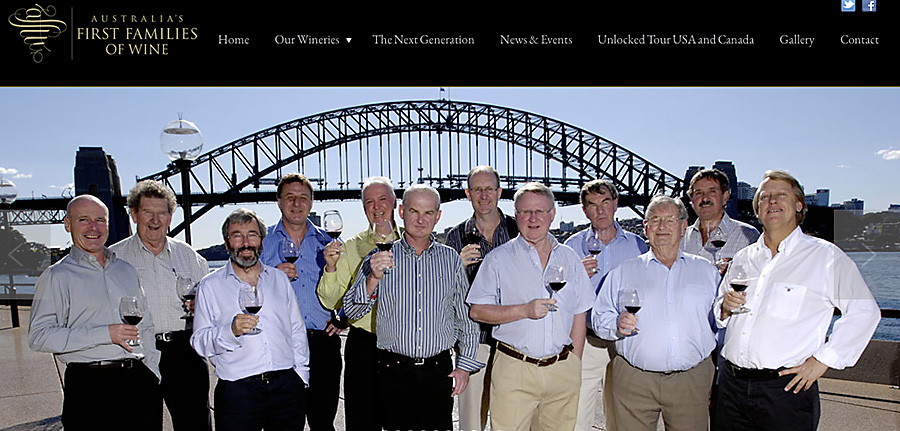
Australia’s First Families of Wine : web site home page.
Ross and I and Alastair Perbrick and Col Campbell I suppose are the same. I knew Mitchell Taylor – but not well – now I know him well and he’s just a wonderful bloke.
So we’re much closer that we were, and more importantly now the next generation are getting to know each other. They are sent on tour for three days every year – they go as a group. They went to Margaret River last year – they were here the year before… we brought them in for the weekend of the Hunter Valley wine shows.
They went to the presentation lunch then came here and to Mc Williams and then they did a function in Newcastle.
And I remember saying to them – you’ve all got the same problem – your Father wont let you do exactly what you want to do in the winery and he won’t bloody retire and you are all dead scared that your mother is going to die and he’s going to shack up with a floozy and she is going to get all your money all your inheritance.
What you have is this network and you must never lose that because when the problem does hit you know that you are going to get an honest answer because they’ve got the same problem.
We’re suddenly finding that people are coming to us.
I think that we’ve all been concerned whether the ‘brand’ of ‘First Families of Wine’ was actually doing anything. I think we’ve all got this ‘ it has resonated’ it is working.
Most of the marketing we’ve done is overseas, but we are talking to more people locally as a group, even Dan Murphy’s.
You’ve had a long career in the wine industry what is it that you love about it, and also what have been the highlights ?
Well look, its like this, it’s a very jealous mistress.
I think I allowed it to become a very very jealous mistress in those early days in the 70s – the market was growing rapidly and it was just grab the tiger by the tail and run like hell – you took every opportunity you could and you just went for it .
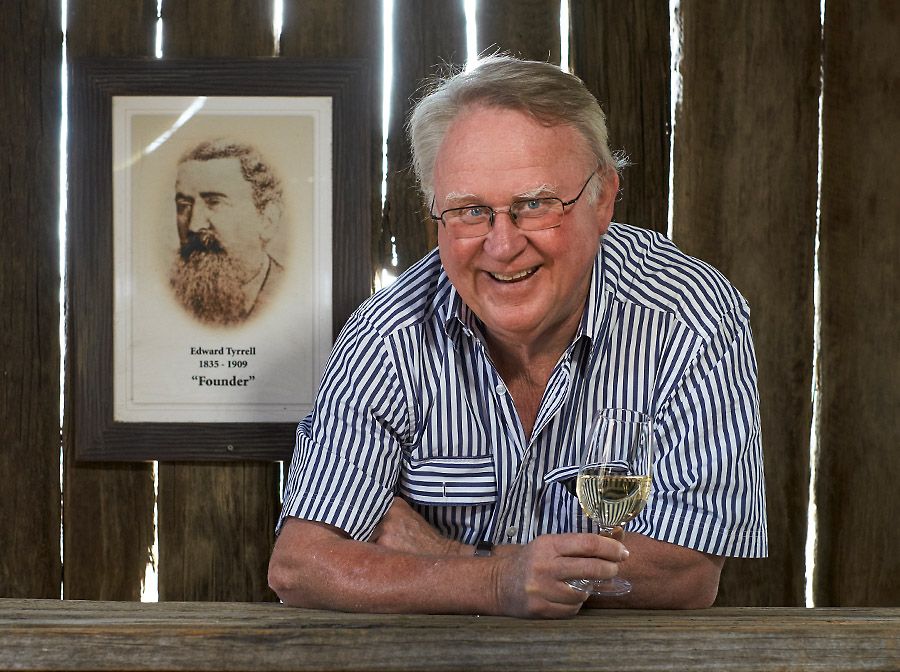
Bruce Tyrrell with a portrait of the company founder Edward Tyrell in The origonal ironbark slab hut, Edward built in 1858. Photo : Milton © Wordley.
The business coaching of the 70s and 80s was just grow – don’t worry about anything else just grow – grow your sales grow your production and you’d be right.
So that was an exciting bit of it.
The last ten – fifteen years have not been a lot of fun – its been bloody hard.
They’ll come around again times come and go — the last 20 or 30 years of the 1800s and the early 1900s must have been a wonderful time in the wine industry.
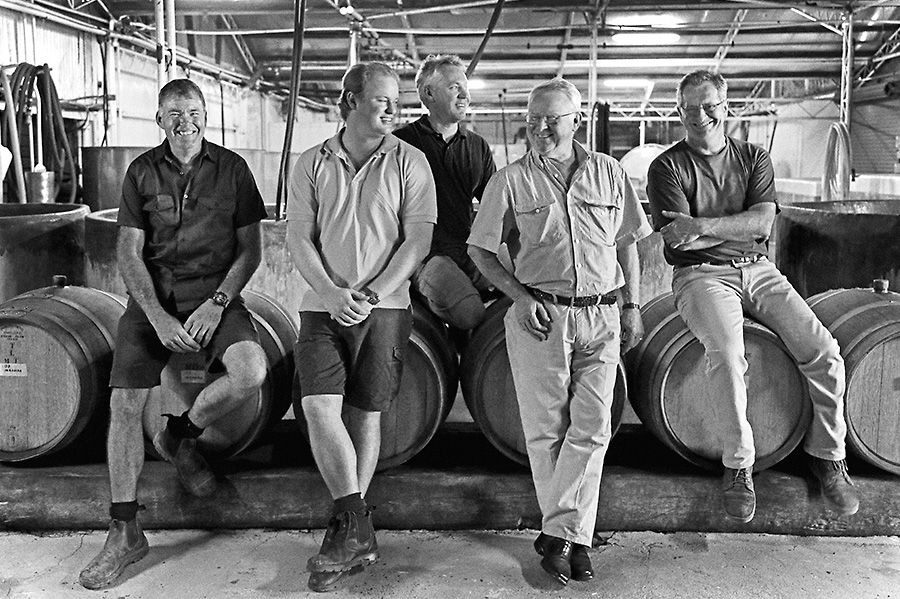
Tyrrell’s winemaking team , L-R Andrew Pengilly (Vineyards Manager), Chris Tyrrell, Mark Richardson (Red Winemaker), Bruce Tyrrell and Andrew Spinaze (Chief Winemaker). Photo : Emma-Jane © Pitsch.
The last two booms , certainly in production and planning have largely been driven by nothing more than the tax act – the stock market boom of the early 70s , late 90s and the deal in 94 that Brian Croser was able to do with the government, when we got that accelerated depreciation but we needed to plant red vineyards too.
But there have been some tough times – I think the toughest of all has been this last run – the banking and financial industry has a lot to answer for and they got let off too the bastards – I always say those guys from Lehman brothers – I would have given them them a gold handshake, put it round their necks and kicked them off the top of the building – should have all gone to jail.
A whole lot of them should have.
With the high dollar – basically export evaporated. The real highlight has been the whole change in perception of the wine industry, we’ve gone from being this funny little thing that sat on the side to being a major contributor to society.
I had a girl friend from Inverell in the early 70s when I was at University.
Her father was not happy that his daughter was going out with someone from the wine industry, because we were down there with used car salesman – I think that has changed – as I say it’s a jealous mistress but its allowed us to see the world to go to some amazing places – to meet some amazing people.
This year we sent out a thousand Christmas cards – the year my daughter was born we took one with Pauline and I and Jane and the dog and this year there will be about 13 or 14 of us in the photo and we do that every year – we keep contact.
That’s one of the wonderful things – you eat in some of the great restaurants in the world you drink some of the great wines in the world you meet amazing people because it is a tough industry and you have to have your own vision and view and when you get out and about and you learn new things everyday.
If you are making nuts and bolts you don’t learn much new everyday.
For us it’s the Semillon thing and I think Spin and I realised that at the same time back in the early 80s.
We were going to be people who got to work with something that was truly unique – If the industry has given me anything its given me that opportunity.
It’s been a bloody long climb up the hill pushing a wheelbarrow full of rocks to get the recognition for it. But in that list of Decanters legend wines we were there with your first growth bordeaux wines and Château d’Yquem and Krug and Penfolds Bin 60A and that sort of stuff and there is bugger all white in there.
I remember I was asked to speak at the Fine wine 2010 conference in Ribera del Duero and they were paying for it so I thought – we’ll go.
And we walked in the first night and this tall attractive Asian woman came over to me and said “Are you Bruce Tyrell” and is said ‘Yes’ and she said I’m Jeannie Cho Lee, (the first Asian Master of Wine) – and she said I’ve always wanted to meet you – your Semillons are the best white wines in the world, and I went WTF, Jesus – wow … Thank you….
The next day the young bloke who was the sommelier at El Bulli said, say hello to your red winemaker and your son Chris, they look after me really well and he said the only Australian wine I brought back for the list was Vat 1.
These compliments just kept happening and I kept saying to Pauline – if i get a swelled head just hit me won’t you.
We’ve done it …It took thirty years, but we did it. Its never going to be a major force in the world of winemaking there isn’t that much of it – it’s a bit like the Hunter , that’s why it’s shrinking because out of those two tax booms there was a lot of vineyard planted where it shouldn’t have been, wrong varieties , all of those things and now its shrinking back again .
I said to Max Drayton about 5 years ago we might be back to where we were in 1970 , because the little bits of soil are specific and with the Semillons we make Vat 1 over here, the Stephens and HVD and Belford they are all specific bits of dirt with their own characters.
We had a guy here from Czechoslovakia last week and he is writing a thesis on Hunter Semillon and he said – I just cant believe it . We gave him the four Semillons and the same three vintages of each – 16, 11 and 05 or 06 – it just blew him away – and thats what it is going to be a small little area with great bits of vineyard – I always reckon this is the closest we get to Burgundy we’ve got those little bits of specific things that have got their own character its not wall to wall vineyard .
Tyrrells also source fruit from a few other regions, can you elaborate ?
My sister Ann and John her husband own the Hanging Rock winery in Macedon. Dad and I were down there with them a few years ago. John showed us this wine and we both looked at each other and thought thats what we want…. It was 93, 94, we needed some more red wine vines and ended up in partnership with David Anderson of Wild Duck Creek and away we went.
We were actually negotiating on a lease almost next door to Davids, and he rang me late one night and said – you have to come down tomorrow – you have to come – I’ve found this great bit of country.
So I went down the next day and it was on the south eastern slope of Mount Camel.
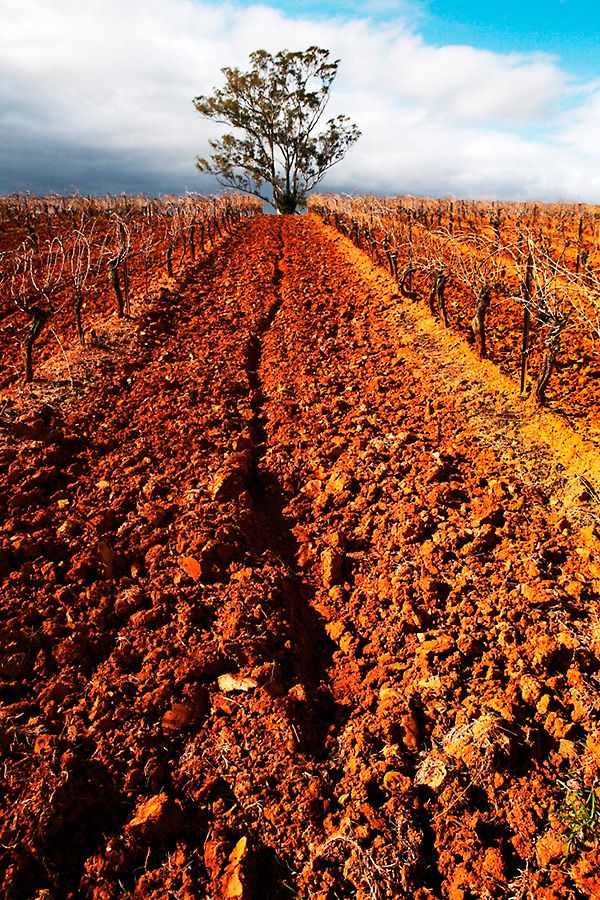
Tyrrells ‘Four Acres’ Vineyard, Hunter Valley. Photo : Jeremy © Simons
It was an old wheat paddock and they had passed it up so we bought the block with the most greenstone under it because we knew we had to have water down there because there is a tiny average rain fall, you don’t have a crop .
In fact Ann and John don’t have water and they are next door to us.
They are down the hill from us – and the further you get away from our fence line the smaller their crop gets….So we bought this place and away we went,we planted 1994 /95.
We bring all the fruit back here in three tonne bins on the back of a ‘B Double’, takes about 12 hours cold soak and agitated on the back of the truck .
We’ve got very strong protocols with the phylloxera. I would probably plant more vines in Heathcote if we were to expand.
It’s about your area and you get to know it trust it and understand it.
We had some vines in McLaren vale a while ago but now prefer Heathcote
Viticulture / Winemaking….. A few years ago and now ?
There is nothing more dangerous than a winemaker in a vineyard a week before vintage if he hasn’t been there for the rest of the season.
Well, if your fruit is not right at the end of the day people buy a bottle of wine because of the taste of it and the guts of that taste should come out of the vineyard.
You pick it when the flavour is right – we work on flavour and pH – sugar comes in only if it’s going to get too high.
Twenty Five years ago everyone thought the blokes working the vineyard were just the peasants.
There’s a wonderful quote in Campbell Mattison’s book on Laurence O’Shea – Wine Hunter.
He talks about an oak cask being a place for the wine to lie and rest and get itself ready for bottle and it must never add any flavour to the wine because you work in the vineyard to get that flavour out of the grapes.
Its true you see it here. It happened in 2014, a great year – they left them out and they got them over ripe and then they overloaded them with oak and then they all tell you how good they are in the vineyard.
We used to have on our EGY Tyrell labels the term ‘Winegrower’, I think it is a wonderful description
Anything else you would like to say ?
The Hunter Valley is twelve years away from turning 200. The first vines were planted in 1828.
We still own the oldest Chardonnay block in the world – out on HVD planted in 1908.
Something you know, that we don’t talk enough about here in Australia is that this is the greatest repository of old vines – Europeans don’t have them, and The Hunter is the oldest… its basically us and the Barossa.
There are thirteen blocks in the Hunter on their own roots which are over 100 years old . I’ve got seven of them and I want to get the other six.
There were vines in the first fleet. Some of those vines are still in the Botanic Gardens in Sydney….The oldest block is right here at the top of a nearby hill – its called the ‘Four Acres’, its shiraz.
We know that’s first generation cuttings from the Hill of Hermitage from the Busby collection planted 1867.
John Beeston reckons in all his research that they are actually first generation cuttings from La Chapelle – I don’t know whether its true or not but its a good story.
I used to drive past Hunter vineyards every day, many of them over a hundred years old.
Our policy now is, if the vineyard is over a hundred years old it gets bottled on its own because it deserves to be.
ENDS.
Production, interview & photography : Milton Wordley
Transcript & edit : Anne Marie Shin
Website guru : Simon Perrin DUOGRAFIK










